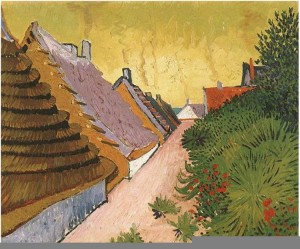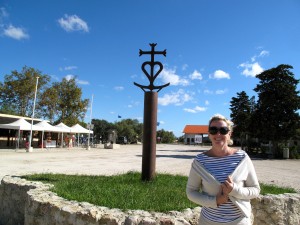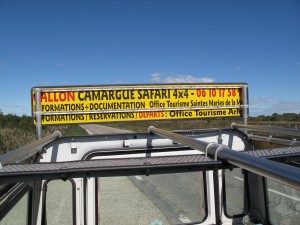-
Day 218: No Candy Weekend in the Camargue
The Camargue is only a three-hour drive from Nice but it’s another world – perfect for a 48-hour vacation. It’s one of the least French places in France, a vast, triangular delta where the Rhone river meets the Mediterranean.
The Camargue is known for its semi-wild white horses, who’ve been in this region since prehistoric times, pink flamingos – and bulls.
We saw the white horses right after we drove off the main highway south of Arles and entered this slice of flat, wide-open France-meets-Big Sky Montana world. The 1971 cult movie, Friends, was shot here. Pink flamingos appeared on the watery marshes and black bulls lounged in pastures.
Best were the mini Ponderosa-style ranches that dotted the horizon. We stayed at one (below) where we woke up to the white horses and French cowboys called gardiens who work with them and herd the bulls. Calling Hoss and Little Joe! Except these gardiens were about a foot shorter and very compact.
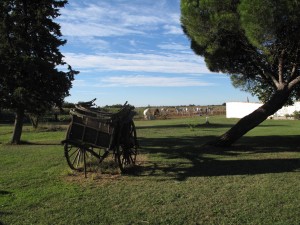 I slept like a baby on the little ranch.
I slept like a baby on the little ranch.All the ranches are inland. The seaside village of Les Saintes-Maries-de-la-Mer is at the end of the highway that cuts down from Arles to the sea. We walked along the seafront promenade overlooking the same Mediterranean I see every day in Nice – but it seemed wilder, more like the high Atlantic seas off Biarritz.
Les Saintes-Maries-de-la-Mer also reminded me of Plum Island, Massachusetts and the coastal towns of southern Maine. So it was jarring to hear the people walking near us speaking, of course, in French. I kept looking around for saltwater taffy and fudge shops but there weren’t any.
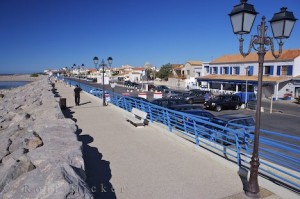 Vincent Van Gogh painted Street in Saintes- Maries here and Tori Amos wrote a song called “Marys of the Sea.”
Vincent Van Gogh painted Street in Saintes- Maries here and Tori Amos wrote a song called “Marys of the Sea.”The town’s name refers to the three Marys who were said to have been the first witnesses to Jesus’ empty tomb – Magdalene, Mary Salome and Mary Jacobe. According to French legend, they sailed from Egypt in the 12th century and landed here. Their relics are in nearby churches.
Gypsies also come here every May to worship one of the Black Madonnas that are enshrined all over Europe. The Black Madonna here is part of the cult of St. Sara, the patron saint of the Roma. Sara is believed to be the dark-skinned servant who accompanied the three Marys to France.
We went on an amazing three-hour safari on a Jeep into the heart of the Camargue. I would have preferred to go out on horses but galloping is not recommended a couple weeks after an appendectomy.
Our fabulously eccentric guide, Alan Jacob, a Frenchman who flew seaplanes in the US, travels to Iran once a month, speaks six languages including Farsi and Arabic, and who, I told him, must have worked for a spy service, made me glad we chose the SUV tour.
Oh, and Alan said the Mary Magdalene legend was cooked up by locals in the 19th century to encourage tourism. He doesn’t believe the parallel tale that she was actually Jesus’ wife, either. Qui sait?
Alan is not a croyante, or believer, as they say in French. But he did take us to see one of the bigger versions of the Camargue cross, which consists of three emblems – an anchor, a cross and a heart – representing the fishermen and farmers of the region.
We had lunch Sunday inside the stone fortress (in the Petite Camargue) that makes up the town of Aigues-Mortes, literally “dead waters,” which dates back to the 10th century. Louis IX of France rebuilt the port in the 12th century as an impregnable fort and it was a launch point for the two of the Crusades.
And then it was back to what passes for the real world for me: Nice. The highway is always the most dangerous place for me because every now and then you have to stop at the big, American-style gas stations/fast food restaurants. It’s the only place in France where you see shelves of candy bars and displays of ice cream bars. And when I’m on the road, I love eating candy.
Not this time. Not this year.

